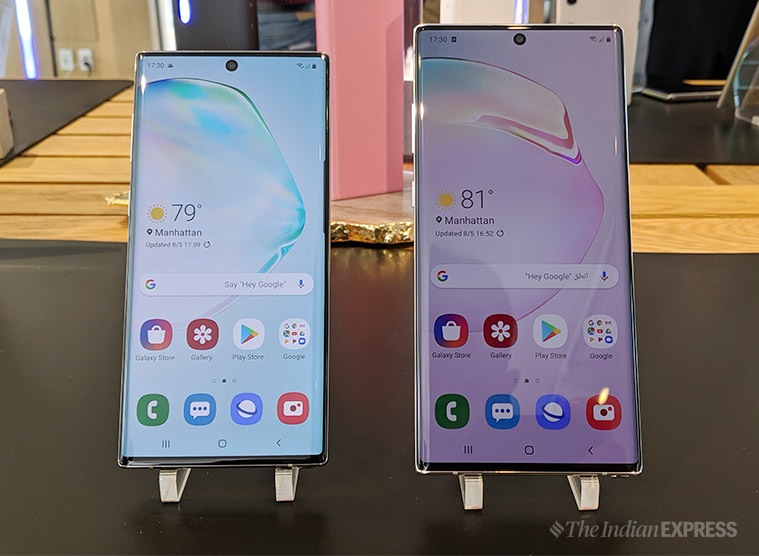
The Galaxy S series is by far Samsung’s most popular flagship line. But sales of high-end smartphones are falling in developed markets and the South Korean smartphone maker is feeling the pinch. Samsung’s mobile boss DJ Koh has a plan: Release a compact version of Galaxy Note 10+ at a much lower price to help attract new customers to the Galaxy Note series. This is an unusual move for a company which has always reserved the flagship Galaxy Note line for power users and creatives.
The Galaxy Note 10 is likely to be a big seller.Starting at $949, the phone has almost all the features found in the Galaxy Note 10+, including the S Pen, a powerful 7nm processor and the metal and glass design. But costs a lot less than the Note 10+ thanks to more compact form factor, a 6.3-inch FHD+Infinity O display, triple camera setup, and a smaller 3500mAh battery. Additionally, the Galaxy Note 10 has been launched in a total of six colours. This surely broadens the market for a product, because many consumers buy a phone based on colour. If Samsung succeeds in the strategy, the Galaxy Note 10 could move more overall units.
Samsung Galaxy Note 10, Note 10+ photos
Let’s be honest, Samsung has too many flagship devices at the moment. This year, Samsung is selling four models of the Galaxy S10, including a cheaper Galaxy S10e which starts at $749. With the Note 10 and Note 10+, that number jumps to a total of six flagships. For consumers, choosing a new flagship smartphone from Samsung has become a bit more complicated.

Samsung has never explained the rationale behind having two Galaxy Note 10 devices or four Galaxy S10 models. It seems less of an immature decision and more of a strategy to expand the user base.
A company like Samsung, which is the world’s largest smartphone maker, has to offer more models at different price points in order to cover a variety of people. That’s exactly what it has done with the Galaxy S line and Note lineup in recent months. It needs to convince a user to buy a Galaxy phone, now whether that would be a Galaxy S10 or Galaxy Note 10+ is something that really doesn’t matter.
But it also needed an entry-level model to keep price-conscious consumers happy. The Galaxy Note 10 is significantly more accessible than the Galaxy Note 10+. Apple has successfully championed the model with the iPhone XR. The phone doesn’t come cheap at $749 and has many similar features currently found in the expensive iPhone XS. That way Apple manages to make a phone as good as iPhone XS at a lower price point without hitting profit margins.
“It is bold of Samsung to have two screen sizes this year,” agrees Ben Stanton, Senior Analyst at Canalys. “This doubles the complexity of production and inventory management and makes its channels strategy more challenging. All of this complexity adds cost. However, it is a perfect time for Samsung to double-down on its product strategy.”
In a way, Samsung is making sure the Galaxy Note 10 has mass appeal rather than a phone aimed at a slightly different audience. Last year’s Galaxy Note 9 was a solid device, but never found an audience beyond creatives, power users and business executives.

The Galaxy Note 10 will attract big attention. Maybe Samsung has finally figured out how it wants to position the Galaxy Note line. The company has somewhere acknowledged that it needed to reevaluate what features were most important to users. The 6.3-inch display on the Galaxy Note 10 is huge, but isn’t as large as the Note 10+, which has a 6.8-inch screen and can be difficult to use one-handed. Sure, there are four cameras on the Galaxy Note 10+ versus three on the Note 10. But the fourth ToF sensor on the Note 10+ does not make a huge difference to the overall picture quality.
While it is highly likely that the Galaxy Note 10 will cannibalise some sales of Galaxy S10 lineup, that shouldn’t worry Samsung. The overall premium smartphone market is expanding in a country like India, if Samsung’s decision to launch the Galaxy Note 10 in two models proves right, there is enough opportunity for Samsung to grow both market share and revenue in the world’s second-largest smartphone market.
Disclaimer: The author is in New York on the invite of Samsung India.